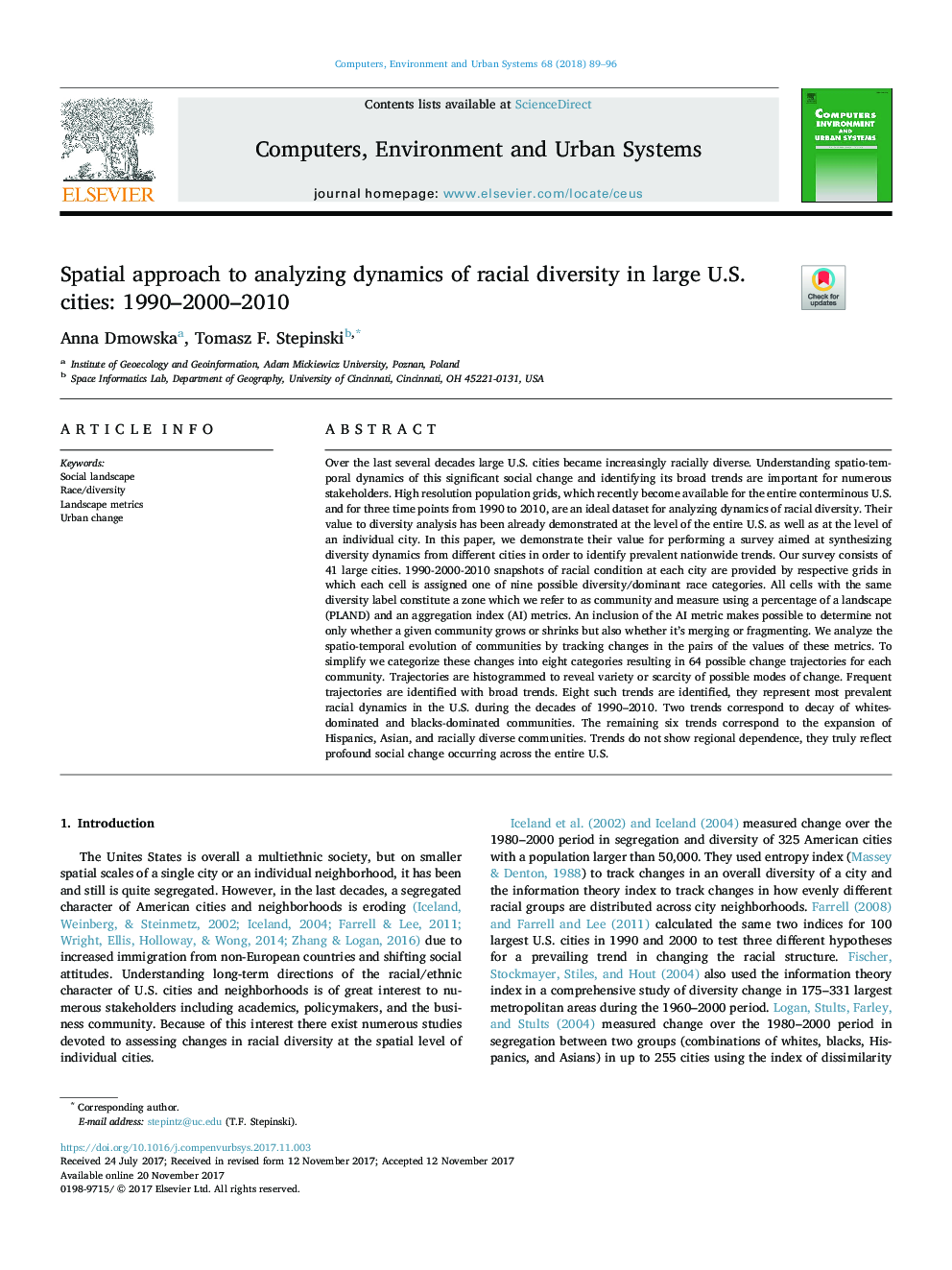| Article ID | Journal | Published Year | Pages | File Type |
|---|---|---|---|---|
| 6921872 | Computers, Environment and Urban Systems | 2018 | 8 Pages |
Abstract
Over the last several decades large U.S. cities became increasingly racially diverse. Understanding spatio-temporal dynamics of this significant social change and identifying its broad trends are important for numerous stakeholders. High resolution population grids, which recently become available for the entire conterminous U.S. and for three time points from 1990 to 2010, are an ideal dataset for analyzing dynamics of racial diversity. Their value to diversity analysis has been already demonstrated at the level of the entire U.S. as well as at the level of an individual city. In this paper, we demonstrate their value for performing a survey aimed at synthesizing diversity dynamics from different cities in order to identify prevalent nationwide trends. Our survey consists of 41 large cities. 1990-2000-2010 snapshots of racial condition at each city are provided by respective grids in which each cell is assigned one of nine possible diversity/dominant race categories. All cells with the same diversity label constitute a zone which we refer to as community and measure using a percentage of a landscape (PLAND) and an aggregation index (AI) metrics. An inclusion of the AI metric makes possible to determine not only whether a given community grows or shrinks but also whether it's merging or fragmenting. We analyze the spatio-temporal evolution of communities by tracking changes in the pairs of the values of these metrics. To simplify we categorize these changes into eight categories resulting in 64 possible change trajectories for each community. Trajectories are histogrammed to reveal variety or scarcity of possible modes of change. Frequent trajectories are identified with broad trends. Eight such trends are identified, they represent most prevalent racial dynamics in the U.S. during the decades of 1990-2010. Two trends correspond to decay of whites-dominated and blacks-dominated communities. The remaining six trends correspond to the expansion of Hispanics, Asian, and racially diverse communities. Trends do not show regional dependence, they truly reflect profound social change occurring across the entire U.S.
Keywords
Related Topics
Physical Sciences and Engineering
Computer Science
Computer Science Applications
Authors
Anna Dmowska, Tomasz F. Stepinski,
